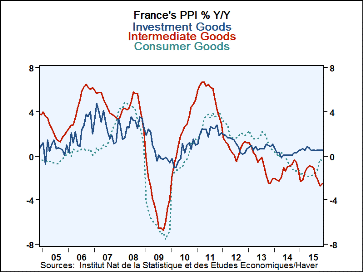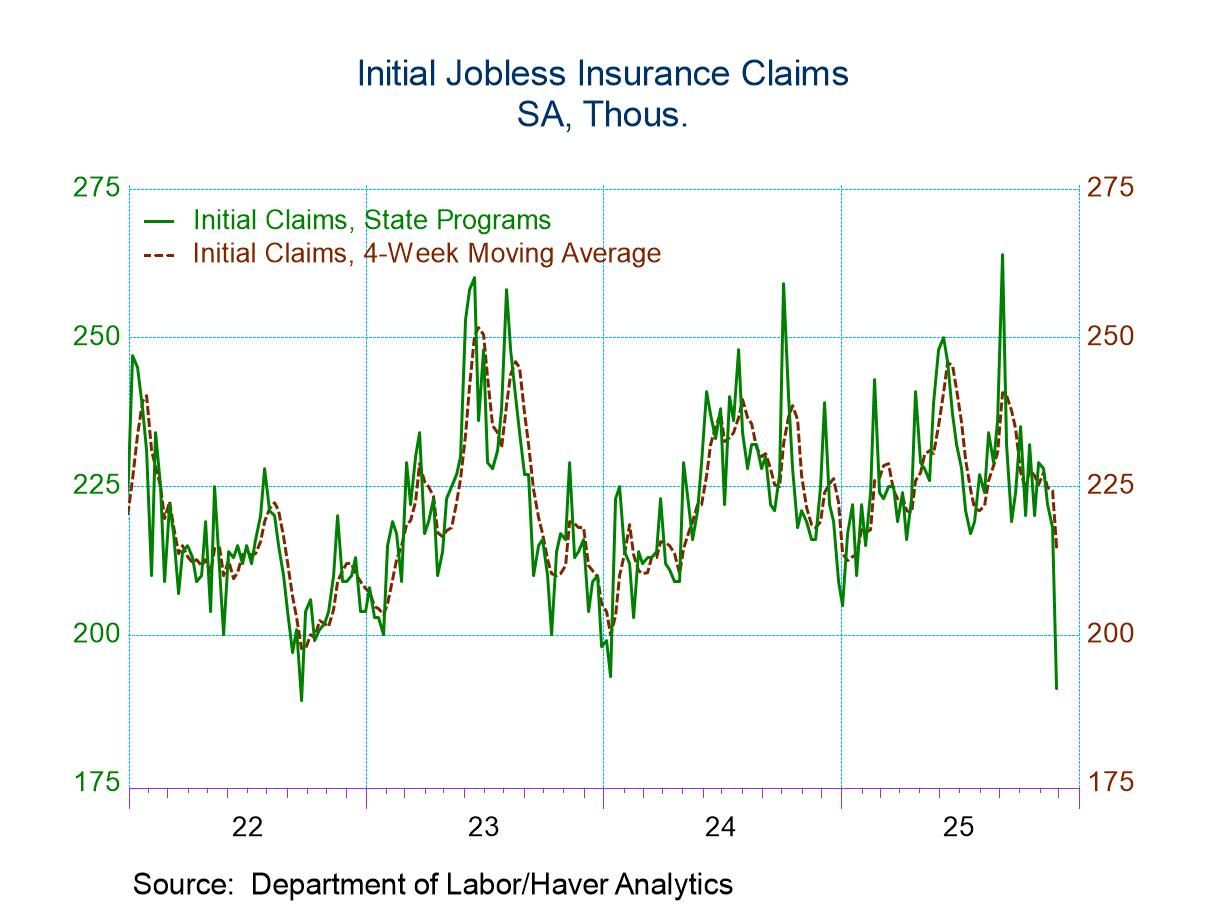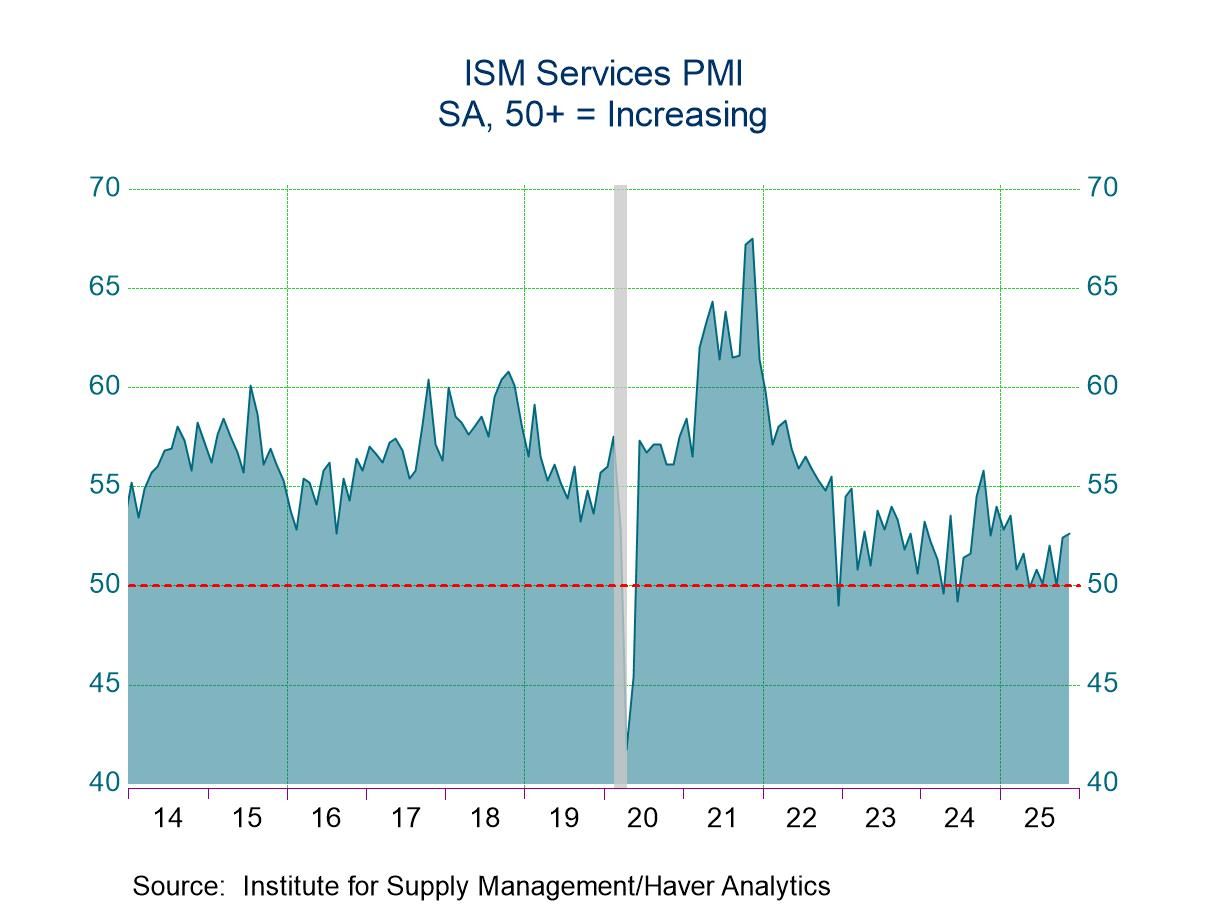 Global| Dec 18 2015
Global| Dec 18 2015French PPI in November Rises 0.2%
Summary
The French PPI excluding construction rose by 0.2% in November after being flat in October and falling by 0.4% in September. The harmonized PPI also excluding construction rose by 0.1% in November after being flat in October and down [...]
 The French PPI excluding construction rose by 0.2% in November after being flat in October and falling by 0.4% in September. The harmonized PPI also excluding construction rose by 0.1% in November after being flat in October and down by 0.3% in September. The two indices show only slightly different results confirming one another's weakness. However, both show that the declining trend of the French PPI is abating. It is falling by only 0.8% (SAAR) over three months while both indices show declines at a pace of from 2.8% to 2.3% over the previous horizons.
The French PPI excluding construction rose by 0.2% in November after being flat in October and falling by 0.4% in September. The harmonized PPI also excluding construction rose by 0.1% in November after being flat in October and down by 0.3% in September. The two indices show only slightly different results confirming one another's weakness. However, both show that the declining trend of the French PPI is abating. It is falling by only 0.8% (SAAR) over three months while both indices show declines at a pace of from 2.8% to 2.3% over the previous horizons.
Looking at the French PPI from the perspective of its components, we see consumer prices lower in November but showing a more or less stable 0.5% rate of increase over six months and three months despite the 0.5% drop year-over-year.
Intermediate goods still show a great deal of weakness. Intermediate prices did rise by 0.1% in November but did so after drops of 0.6% in October and 0.5% in September. Intermediate prices are falling at about a 4% annual rate over three months and six months but by only 2.5% over 12 months. The weakness in intermediated goods prices has not abated and will probably not abate as global oil and commodity prices have just undergone another bout of weakness.
Investment goods prices continue to show a moderate path of price expansion. There is a hint of accelerating here as three-month prices are up at a 1.1% pace, above the 0.5% or so pace the index makes over six months and 12 months.
The core PPI, excluding both food and energy products, however, shows that price weakness is still entrenched. The core shows PPI prices are actually still losing ground that the declines in the core PPI become more pronounced over shorter periods.
France has been the weakest of the large EMU economies. Its manufacturing sector has begun to do better against its history, but it is still quite weak relative to other large EMU nations. And the French services sector has also lost some of its vigor. In the quarter-to-date, we see French headline and HIPP prices falling by about 2.5% along with the core which is falling at a 2.2% pace. PPI weakness in the quarter-to-date is not due to consumer and investment goods prices which are rising in the quarter.
France continues to struggle to get growth on track. The recent Paris terror attack has not helped, of course. But the French economy has problems deeper than just the reaction to the terrorist threat. It needs to find a path to growth and a way to augment productivity.

Robert Brusca
AuthorMore in Author Profile »Robert A. Brusca is Chief Economist of Fact and Opinion Economics, a consulting firm he founded in Manhattan. He has been an economist on Wall Street for over 25 years. He has visited central banking and large institutional clients in over 30 countries in his career as an economist. Mr. Brusca was a Divisional Research Chief at the Federal Reserve Bank of NY (Chief of the International Financial markets Division), a Fed Watcher at Irving Trust and Chief Economist at Nikko Securities International. He is widely quoted and appears in various media. Mr. Brusca holds an MA and Ph.D. in economics from Michigan State University and a BA in Economics from the University of Michigan. His research pursues his strong interests in non aligned policy economics as well as international economics. FAO Economics’ research targets investors to assist them in making better investment decisions in stocks, bonds and in a variety of international assets. The company does not manage money and has no conflicts in giving economic advice.






